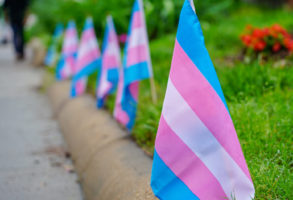
Published April 16, 2020
Who among us, knowing what we know now about COVID-19, doesn’t wish we could roll back the clock to January 1, 2020, and make very different decisions about testing, contact tracing, personal protective equipment, and social distancing?
Well, we are staring at another possible disaster bearing down on us. I refer to the November 3 election. There is still time to act wisely, but not much time.
In the midst of coronavirus, we simply cannot conduct elections in the usual way. In-person voting represents a threat to the health of poll volunteers (most of whom are over age 60) and to voters themselves. We cannot ask people to risk their lives to exercise the right to vote. Wisconsin’s recent mess — with thousands disenfranchised because they didn’t receive their mail-in ballots in time and people waiting in lines spaced out by six feet for multiple hours — is a flashing warning light.
Except November would be far worse than Wisconsin, because an in-person election held nationwide would throw the legitimacy of the results into doubt. At a time when we are bitterly divided, deeply distrustful, and facing a pandemic and economic depression, a disputed election might be more stress than we can stand.
Fortunately, alternatives to in-person voting are not that difficult to achieve with a little advanced planning. Vote-by-mail is already widespread. In the last election, 25 percent of votes were mailed in. Five states — Washington, Oregon, Colorado, Utah, and Hawaii — already vote almost entirely by mail, and every registered voter receives a ballot at home. Twenty-eight others permit mail-in ballots upon request, and 17 states permit mailed ballots but require an excuse such as travel, out-of-state study, or disability.
To prevent fraud, states take a number of steps such as signature matching, requiring other identifying information such as the last four digits of the Social Security number, and using barcodes for each ballot. A study by the National Vote At Home Coalition found that out of 100 million votes cast in Oregon since mail-in voting was adopted in 2000, there were only twelve cases of fraud.
President Trump has thrust a stick into the spokes by suggesting that vote by mail disadvantages Republicans. But there are no data to support that and plenty of evidence to the contrary. For one thing, the voters who would be most wary of in-person voting in the age of COVID-19 are the elderly. In 2016, voters over 65 were more likely to vote than any other age cohort, and they gave 53 percent of their votes to Donald Trump. As Rachel Kleinfeld reports, studies of mail-in voting in Colorado and Utah found that turnout increased by about 2 percent, but neither party got a boost. A new report from the Democracy and Polarization Lab at Stanford gathered mail-in voting data from California, Utah, and Washington State since 1996 and found that voting by mail does not affect either party’s share of the electorate nor percentage of the vote. It did modestly increase turnout.
So Trump’s worry that a vote-by-mail option would mean “you’d never have another Republican elected in this country again” is misplaced. The Republican secretary of state of Ohio, Frank La Rose, rejected that thinking, saying, “We’re fortunate that we’ve been doing vote-by-mail for a long time. We know how to do it, and we know how to get it done securely.” Besides, the six swingiest of the swing states — Pennsylvania, Michigan, Wisconsin, Arizona, Florida, and North Carolina — already permit absentee ballots upon request without the need for an excuse. Just ask President Trump, who votes absentee himself in the Sunshine State.
Voting by mail will require money (Congress already appropriated $400 million in the CARES Act), manpower, and time. States that require an excuse could easily adopt a one-time change to the law permitting COVID-19 to suffice as an excuse for 2020. States can also provide secure drop-off sites for ballots, as well as drive-through options. Extending early voting (generally a terrible idea) makes sense when we are dealing with a new system for 75 percent of voters, and when poll workers likely will be scarcer than usual.
Standing in line with your neighbors to vote in your local school or church is a civic ritual that ranks with fireworks on the Fourth of July. It’s part of the pageant of patriotism. But this year, we’ll need to make other arrangements. We cannot risk a crisis of political legitimacy on top of everything else we’re saddled with. The slogan for November should be: Mail it in!
COPYRIGHT 2020 CREATORS.COM
Mona Charen is a syndicated columnist and a senior fellow at the Ethics and Public Policy Center.




